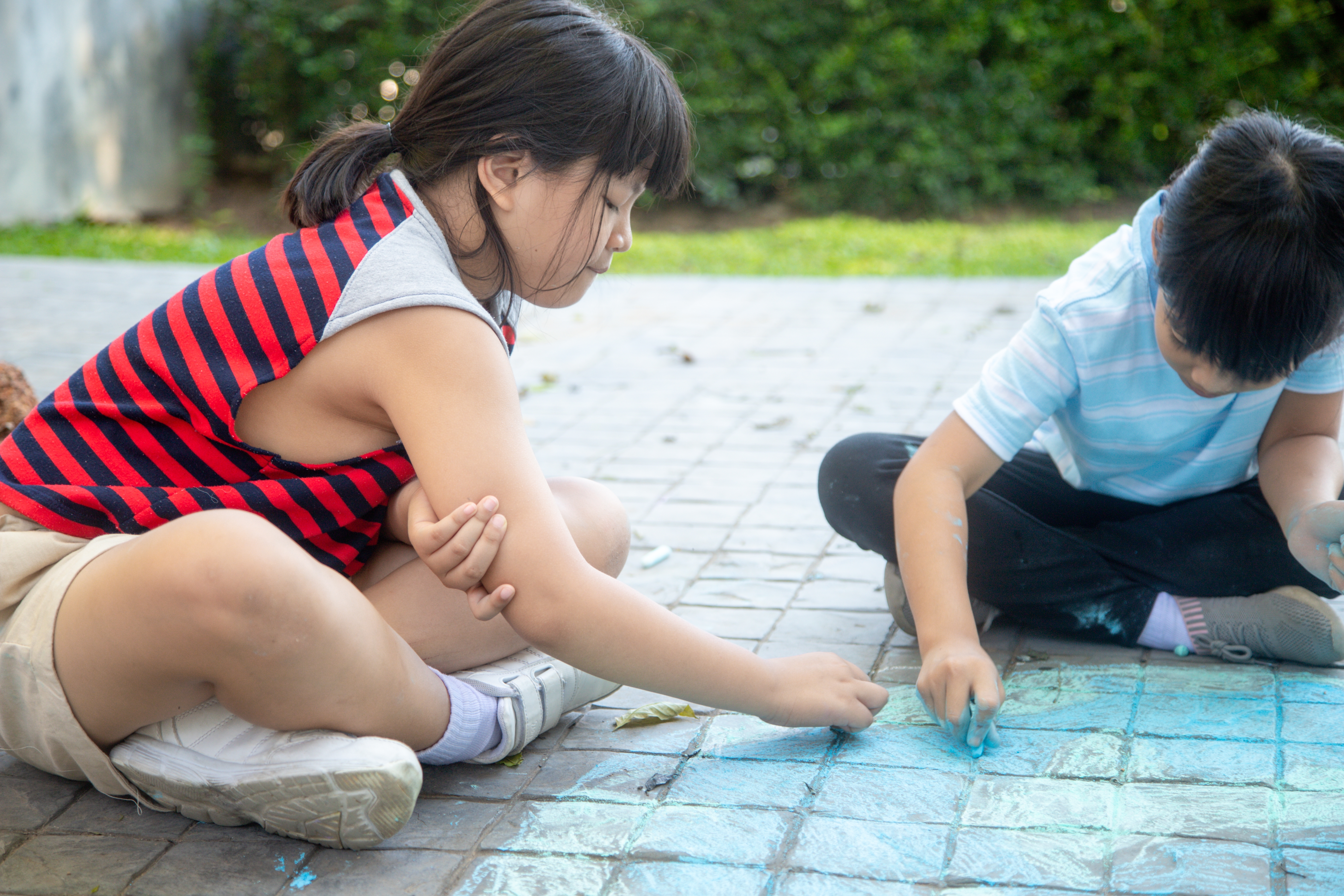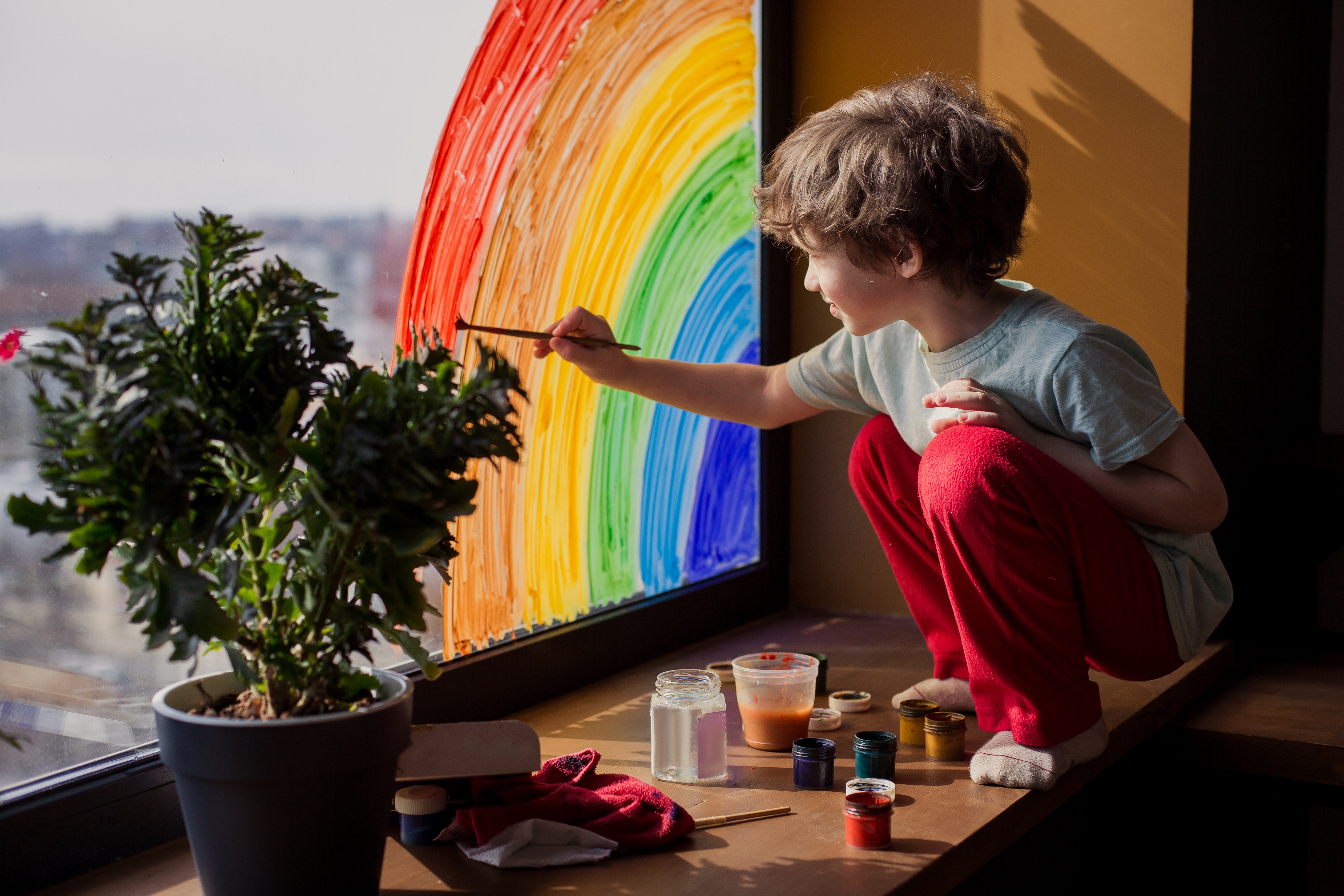1. Acknowledge kids’ feelings... and share your own
During tough times, one of the most important things you can do is seek out your child’s perspective. If they’ve seen or overheard something troubling on the news, you might invite them to share instead of simply assuming how they’ll react: “I just saw a picture on the TV. Did you see it too?” Then follow up by acknowledging their emotions and making them feel heard. Even a simple statement like “I understand you’re angry. Can you tell me about that feeling?” can help them put a name to a big, messy emotion — so they can better navigate it.

What’s more, by sharing your own feelings of sadness or anger or fear, you can show your child that it's okay to feel all sorts of emotions, while modeling healthy ways to manage them. Sharing is a two-way street, and vulnerability on your part lets your kid know that they can confide in you without judgment.
2. Offer opportunities for kids to play with their fears
Kids (and adults!) are often afraid of the unknown, but just because something is unknown doesn’t mean it’s unknowable. Through play, kids can process scary and uncomfortable situations in a safe environment and build the skills they need to cope. They might fumble with a flashlight or put up a shadow puppet show to reassure themselves that shadows aren’t quite as spooky as they seem. They might play operation or practice getting shots at the doctor. Or they might ask you to play patient, while they play doctor — giving them a newfound sense of control over an anxiety-inducing situation.

Stories are another great way for kids to play with their anxieties. Whether they’re about the monster beneath the bed or the little kid lost in a forest far from home, books let kids safely “practice” their anxieties over and over — until their fears no longer have quite so much bite. Books also help model positive coping skills, like courage and perseverance in the face of fear.
3. Be honest when discussing difficult topics
When speaking with children, it can be so, so tempting to soften troubling news — like the death of a loved one. It's a kind and totally understandable impulse for any loving parent to have — why wouldn't we want to shelter our kids from something that adults find difficult to bear? But children are concrete thinkers: euphemisms like “they went bye-bye” or “they went to sleep” may confuse and even trouble them.
When we’re able to be honest with kids, it helps them better understand the realities of a difficult situation, which in turn paves the way for healthier coping: “We can’t talk to her anymore, and that makes me sad too. But we can still tell stories about her, we can still look at pictures of her, and we can still love her.”
4. Be gentle and reassuring
While honesty and transparency are key when discussing tough topics, it’s important to lead with gentleness and reassurance. On the subject of death, you might say, “Don’t worry — I expect to live a very long time!” Even when facing everyday anxieties, a little reassurance goes a long way: “The bus made a loud scary sound as it opened its door. The bus is gone, so I don’t expect another sound like that right now.”
You can even take the reassurance one step further by offering concrete steps that you and your kid can take together. When discussing a global conflict, for instance, you could say: “We can collect toys and books to share with the children who lost their toys and books when they left their homes for somewhere safer. Do you want to do that?” Concrete steps give kids a sense of direction — and that can be a real comfort in the face of fear and uncertainty.

Look to your child for the cues you need to figure out the language and approach that works best. If spirituality or faith is a part of your household, you may want to lean into the language and practices of your faith that feel most meaningful and comforting to your family.
5. Get involved in your community
When faced with tough times in their community or even around the world, children often wonder how they can be part of the solution. It’s important during these moments to give kids space to think creatively, so they can find ways to respond that feel authentic to them.

One way to respond is through active and thoughtful participation in their community — whether that means cleaning up trash at the park or hanging positive messages on your window. Supporting a cause, big or small, gives children the positive reinforcement they need to believe they can make a difference . . . which they can.
And the benefits go both ways. When kids are involved in their community from an early age, that community becomes a part of their lives. It empowers them. It helps them build the confidence and self-esteem to help not just others, but also themselves when tough times come again. So try asking your children what ways they think they can get involved in their community. You might be surprised — and inspired — by their ideas.
Additional Resources:
- Talking to Children About Violence: Tips for Parents and Teachers
- Parent Guidelines for Helping Youth After the Recent Shooting
- Coping in the Aftermath of a Shooting
- How to Talk to Kids About Violence, Crime, and War
- Raising Kids Who Can Cope with Tough Times
- How to parent through tough times
- Resilience in a time of war: Tips for parents and teachers of elementary school children
- LORIS-MALAGUZZI-FRAGMENTS-02-ENG - Children, the War, and Us.pdf
Photo credit in order of appearance: Da Antipina/shutterstock.com, Prostock-studio/shutterstock.com, kryzhov/shutterstock.com, SeventyFour/shutterstock.com, FAMILY STOCK/shutterstock.com

